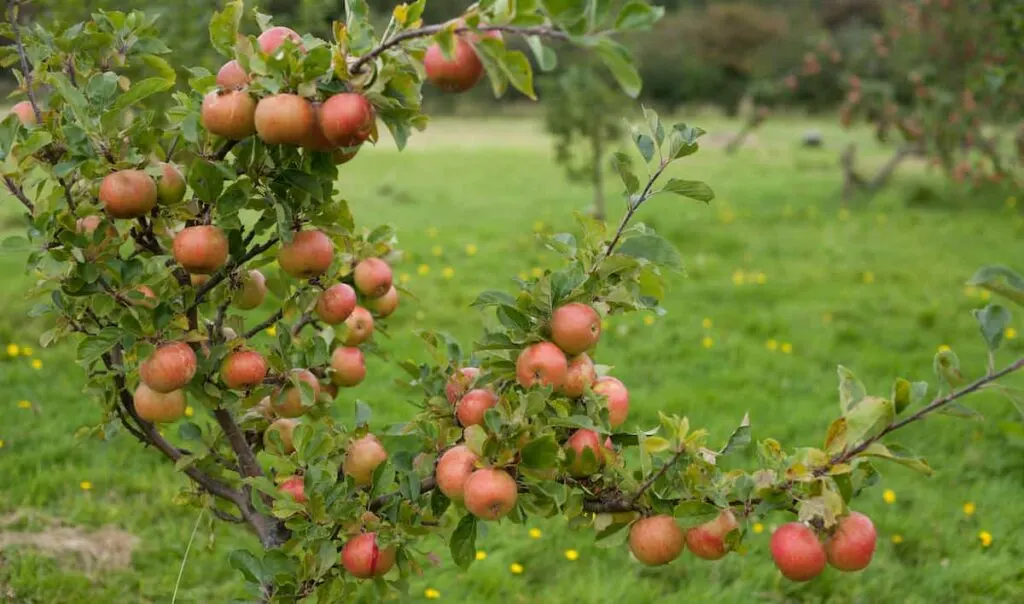
Introduction
As urbanization continues to expand, gardeners and homeowners are often faced with the challenge of growing fruit trees in limited spaces. However, this should not deter them from enjoying a bountiful harvest. Enter dwarf fruit trees: the perfect solution for small gardens or even balconies. In this article which has been inspired by discussions with CRJ Fruit Trees, we explore the benefits of dwarf fruit trees, their various types, and how you can maximize your harvest within a confined space.
What Are Dwarf Fruit Trees?
Dwarf fruit trees are smaller versions of standard fruit trees, typically grown on dwarf rootstocks that limit their size. They are developed through grafting, a process where a desired fruit-bearing tree is attached to a dwarfing rootstock. These miniature trees can provide an abundance of fruit, often as much as their full-sized counterparts, without requiring vast amounts of space.
Benefits of Dwarf Fruit Trees
Space-Saving: One of the most significant advantages of dwarf fruit trees is their compact size. They can be grown in small gardens, patios, balconies, or even in containers, making them ideal for urban dwellers who want to enjoy fresh fruit in their limited outdoor spaces.
Easy to Maintain: Due to their smaller stature, dwarf fruit trees are easier to prune, spray, and harvest. This means less time spent on maintenance and more time enjoying the fruits of your labour.
Quick to Bear Fruit: Dwarf fruit trees often bear fruit earlier than their standard counterparts. Depending on the variety, some dwarf trees can start producing fruit within two to three years, as opposed to the five to seven years it takes for a standard fruit tree.
Variety: There are numerous dwarf fruit tree varieties available, including apples, pears, plums, cherries, and peaches. This allows you to grow a wide range of fruits in your small space.
Aesthetics: Dwarf fruit trees can be aesthetically pleasing and can act as a focal point in your garden. Their smaller size allows for more creative landscaping and adds visual interest to your outdoor space.
How to Maximize Your Harvest in a Small Space
Choose the Right Varieties: Select dwarf fruit tree varieties that are well-suited to your local climate and growing conditions. Opt for self-pollinating trees or trees that can cross-pollinate with others in your garden to ensure a successful harvest.
Planting: Plant your dwarf fruit trees in well-draining soil with good fertility. Ensure they receive at least six to eight hours of sunlight daily for optimum growth and fruit production. For container gardening, choose pots with drainage holes and use high-quality potting soil.
Pruning: Regular pruning is essential to maintain the shape, size, and productivity of your dwarf fruit tree. Prune in late winter or early spring to remove dead, damaged, or diseased wood, as well as any branches that may be crossing or rubbing against one another. This will promote better air circulation and light penetration, encouraging healthy growth and fruit production.
Fertilizing: Fertilize your dwarf fruit trees with a balanced, slow-release fertilizer in early spring and again in mid-summer. Be sure to follow the recommended application rates and avoid over-fertilizing, which can lead to excessive vegetative growth at the expense of fruit production.
Watering: Dwarf fruit trees require consistent watering, especially during the growing season. Water deeply and regularly, allowing the soil to dry slightly between waterings. For container-grown trees, be sure to monitor the moisture levels more frequently.
Pest and Disease Management: Keep an eye out for common pests and diseases that may affect your dwarf fruit trees. Treat any issues promptly with organic or chemical pesticides and fungicides as necessary, following the manufacturer’s guidelines. Encourage beneficial insects, such as ladybugs and lacewings, to help control pests naturally.
Thinning Fruit: To ensure a bountiful harvest, thin out the fruit on your dwarf tree during the growing season. This process involves removing some of the developing fruit, allowing the remaining fruit to grow larger and receive more nutrients. Thinning also helps prevent branches from becoming overloaded and breaking under the weight of the fruit.
Succession Planting: If space allows, consider planting several dwarf fruit trees with different fruiting seasons. This will provide you with a continuous supply of fresh fruit throughout the year.
Conclusion
Dwarf fruit trees are an excellent choice for gardeners with limited space, offering a host of benefits, from easy maintenance to a diverse selection of fruit varieties. By choosing the right varieties, planting, and maintaining them correctly, you can maximize your harvest and enjoy the fruits of your labour in even the smallest of spaces. So, don’t let a lack of space deter you from indulging in the pleasure of homegrown fruit – embrace the world of dwarf fruit trees and reap the rewards.




